Origins of Life on Earth
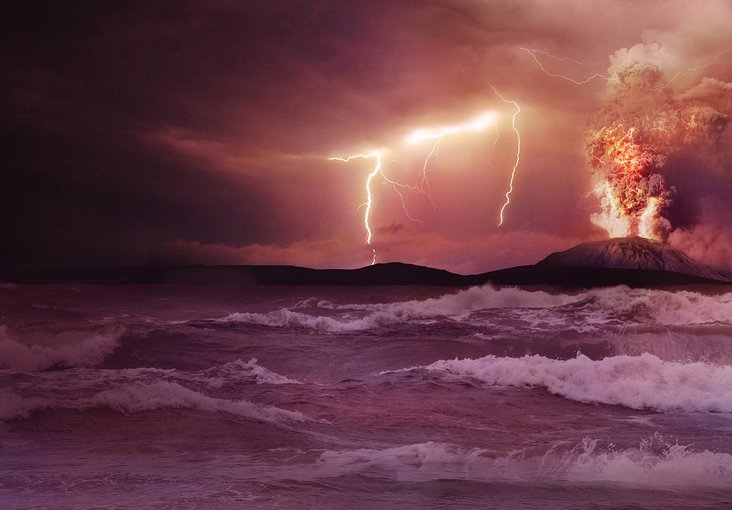
Life on earth is presumed to have started at the time when the atmosphere was laced with lightning and comprised of simple gases.
Table of Contents
Although Earth was created around 4.5 billion years ago, life began to exist not long after. Due to the huge timescales involved, there is inconclusive evidence for exact dates, but nonetheless, the eagerness of life to exist was apparent from the beginning.
Our Solar System was still young, and the Sun was still cooling down after its creation billions of years beforehand. The unique circumstances of our Solar System and our planet gave rise to life. This was due to a number of characteristics that are exhibited by our ecosphere, the area of a planet capable of sustaining life.
Venus, one of our planetary neighbors, is closer to the sun, with the planet exhibiting characteristics that would not be able to support life. On the other hand, Mars is further away from the Sun, and too cold to naturally support life. However, with manipulation by man, via terraforming, Mars could indeed support life in its present state.
However, Earth, for billions of years, has possessed all the materials and suitable conditions for supporting life.
Carbon
All living things possess the element carbon within them. In light of this, Earth had to have a rich supply of carbon to support a rich diversity of life. This carbon was made available by the volatile nature of the Earth in the beginning, where volcanoes spewed various elements into the Earth’s atmosphere.
While other elements were present, various chemical reactions began to take place which would result in the creation of new compounds and elements. One of the family of compounds created over time were the amino acids, the building blocks of protein.
Amino Acids and Proteins
Amino acids are the building blocks of protein, and thus the building blocks of life. The complex organisms of today harness the biological power of proteins in a variety of ways, such as the use of enzymes as a catalyst. (See Protein Variety and also Protein Synthesis)
The First Life
In general, organisms over time in the evolutionary chain have grown and become more complex in their nature, i.e. the first origins of life were likely small, simple and not diversified.
One understanding of the origins of life is that it would have been very unlikely that parasites were the beginnings of life. As parasites require biological hosts to reproduce and thus survive as a species, they would have been unable to successfully continue their species during this time period. In light of this, viruses and other parasites would have developed later on in the evolutionary chain.
It is believed that heterotrophs were the first beginnings of life on Earth, inhabiting the sea and absorbing the organic material that was being created by the reactions of Earth at the time (i.e. the creation of amino acids). The building blocks of life created these organisms and also acted as a food source.
This is where the idea of a food chain becomes relevant. When these first autotrophs died, the organic material that they consist of would break down and add to the ‘organic soup’ that was feeding these organisms at the time.
Alias, it is believed that heterotrophic bacteria were the first signs of life on Earth
Beginning of Evolution
A component of all existing life is that it adapts to survive. You either adapt or you already have adapted. If species did not have this instinctive nature via their genetic information, then they would have no desire to continue living as a species.
Although the beginnings of life above were successfully reproducing, an economy of scale involving the organisms would point out that their food source (the organic soup) would not be able to sustain all life. In light of this, the organisms on Earth at the time would have to diversify over the long term to survive.
It is suggested that around three billion years ago, autotrophic animals had diversified from previous species. These autotrophs are capable of synthesizing energy from inorganic material, i.e. via the sun and elements on the Earth. This had allowed life on Earth to tap into a whole new energy resource, one that was literally inexhaustible – the Sun.
With this in hand, the snowball effect of evolution was beginning to take place….
You will also like...

The Evolutionary Development of Multicellular Organisms
Multicellular organisms evolved. The first ones were likely in the form of sponges. Multicellularity led to the evolutio..
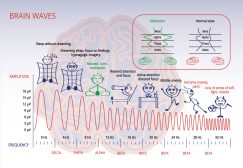
Sleep and Dreams – Neurology
While learning and intelligence are associated with the functions of a conscious mind, sleep and dreams are activities o..
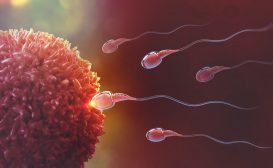
Human Reproduction and Fertilization
For human species to obviate extinction, reproductive mature adults should be producing viable offspring in order to con..
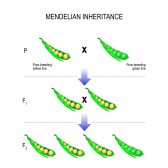
Inheritance and Probability
Gregor Mendel, an Austrian monk, is most famous in this field for his study of the phenotype of pea plants, including ..
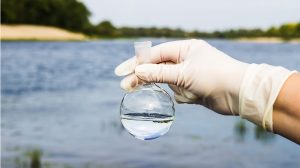
Freshwater Ecology
Freshwater ecology focuses on the relations of aquatic organisms to their freshwater habitats. There are two forms of co..
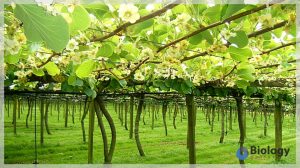
Biosecurity and Biocontrol
This lesson explores the impact of biosecurity threats, and why they need to be identified and managed. Examples to incl..
